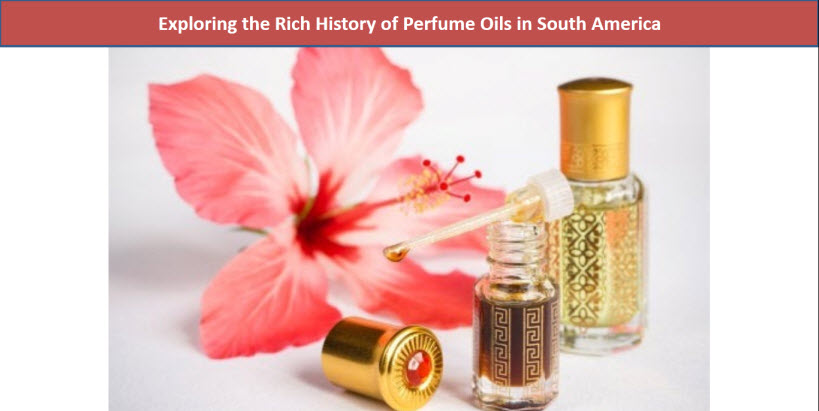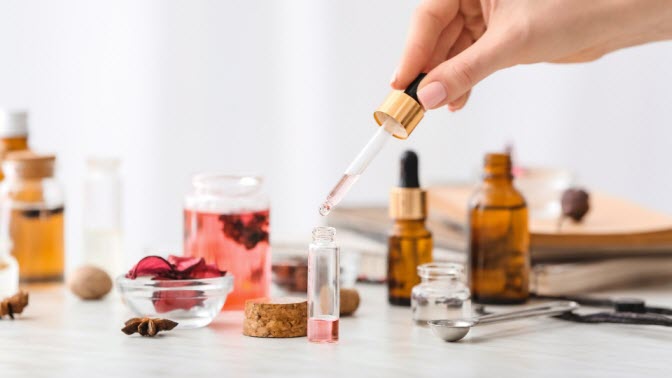Blogs

Exploring the Rich History of Perfume Oils in South America
Perfume oils have a rich history in South America, where indigenous cultures have long valued aromatic essences for ceremonial, medicinal, and personal use. The diverse landscapes and flora of South America have contributed to a wide array of unique scents and fragrances, making the region a fascinating hub for perfume oil exploration. Let's delve into the history of perfume oils in each South American country.
Brazil
Brazil's lush rainforests and vibrant culture have influenced the production and consumption of perfume oils in the country. Indigenous tribes have traditionally used aromatic plant extracts for rituals and healing purposes. With the arrival of European colonizers, perfume-making techniques evolved, incorporating exotic ingredients such as Brazilian rosewood, passionflower, and jasmine. Today, Brazil boasts a thriving perfume industry, with local artisans crafting unique blends inspired by the country's rich biodiversity.
Argentina
In Argentina, perfume oils hold a special place in the country's cultural heritage. From the pampas to the Andes mountains, Argentina's diverse landscapes offer a myriad of aromatic botanicals. Indigenous communities, such as the Mapuche and Guarani, have preserved ancient knowledge of plant-based remedies and fragrances. Argentine perfumers draw inspiration from these traditions, infusing their creations with indigenous ingredients like yerba mate, lavender, and bergamot. The result is a distinctive olfactory experience that reflects Argentina's natural beauty and cultural diversity.
Colombia
Colombia's fertile lands and tropical climate provide an ideal environment for cultivating fragrant flowers and aromatic herbs. The country's rich biodiversity has inspired a flourishing perfume industry, with Colombian perfumers harnessing the essence of native plants like orchids, coffee beans, and cacao. Perfume oils have a long-standing tradition in Colombian culture, with indigenous communities using botanical extracts for spiritual ceremonies and traditional medicine. Today, Colombia's perfume industry continues to thrive, offering a wide range of fragrances that capture the essence of the country's landscapes and traditions.
Peru
Peru's ancient civilizations, such as the Inca and Moche, revered aromatic plants for their therapeutic and ceremonial properties. Perfume oils played a significant role in these cultures, symbolizing luxury, status, and spirituality. Peru's diverse ecosystems, from the Amazon rainforest to the Andean highlands, are teeming with aromatic treasures like palo santo, muña, and maracuya. Modern Peruvian perfumers draw inspiration from these ancient traditions, crafting fragrances that pay homage to the country's rich cultural heritage and natural abundance.

Chile
Chile's unique geography, stretching from the Atacama Desert to the Patagonian wilderness, offers a wealth of aromatic botanicals waiting to be discovered. Indigenous Mapuche communities have long revered medicinal plants like boldo, quillay, and maqui for their healing properties and aromatic essences. Chilean perfumers blend these indigenous ingredients with exotic florals like jasmine, neroli, and violet to create captivating fragrances that capture the essence of Chile's landscapes and traditions.
Conclusion
The rich history of perfume oils in South America reflects the region's cultural diversity, natural beauty, and indigenous heritage. From the Amazon rainforest to the Andean mountains, each country boasts a unique olfactory landscape shaped by centuries of tradition and innovation. As South America continues to inspire perfumers and fragrance enthusiasts around the world, the exploration of perfume oils in the region promises to be an endless journey of discovery and delight.

